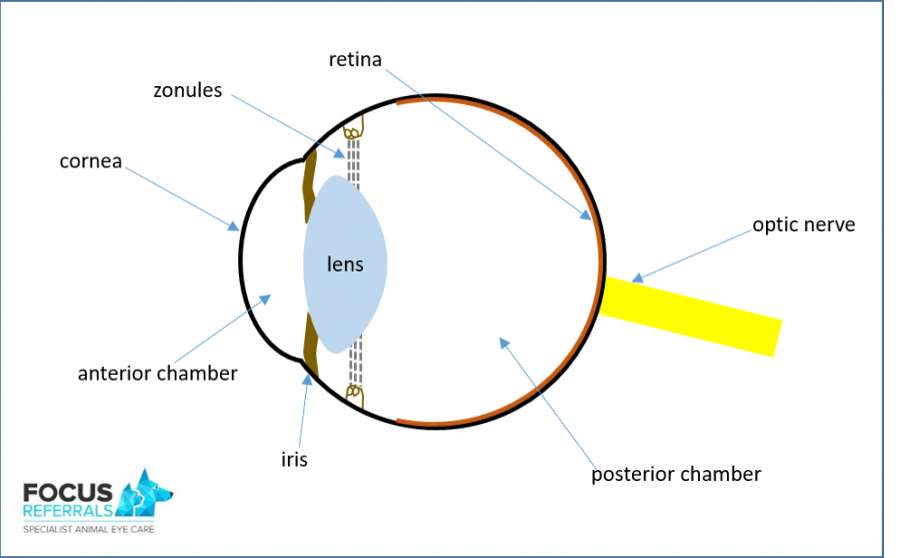Sudden Acquired Retinal Degeneration Syndrome (SARDS)
What is the retina?
The retina (back of the eye) converts light into electrical signals which pass down the optic nerve to the brain. The brain converts these signals into recognisable images (the things we ‘see’.)

What is SARDS?
SARDS is a condition that damages the retina of some dogs causing irreversible blindness. Retinal photoreceptors (cells that convert light into electrical signals for the brain) spontaneously die off (apoptose) for reasons we don’t yet fully understand. The most likely cause is an auto-immune disorder (the body’s own infection-fighting cells attack the retina).
Unfortunately, most dogs with SARDS become blind within a matter of days to weeks.
SARDS affects more females than males and certain breeds (including Miniature Schnauzers and Dachshunds) are genetically predisposed to this condition (born more likely to develop it.)
What are the signs of SARDS?
Usually the first sign of SARDS is blindness. It’s not always easy to tell if your dog is blind because they’ll likely adapt quickly using their other senses to guide them. Your dog might initially seem confused or clingy and only show obvious vision problems when, for example, they bump into recently moved furniture.
Around half of dogs with SARDS also drink and urinate excessively but we still don’t fully understand why. Blood tests sometimes show liver changes and increased steroid hormones but research is ongoing to find out whether SARDS causes this.
How do Focus Referrals diagnose SARDS?
We have a state of the art electroretinogram (ERG) machine to measure the electrical activity of the retina (similar to how an electrocardiogram (ECG) measures signals passing through the heart). We usually carry out an ERG when your dog is awake but some patients need sedation to help them relax.
An ERG detects problems with your dog’s retina even when it looks normal (often the case in very early SARDS).
Another machine we use is a colorimetric PLR tester which shines coloured light onto the retina to stimulate eye reflexes. Dogs with SARDS have reduced normal reflexes (their pupils remain large even in bright light) and tend to respond to blue light but not red.
Is there any treatment available?
Currently there’s no treatment available for SARDS but research is ongoing. Some US websites claim SARDS is treatable but there’s no scientific evidence to support their claims.
Helping your dog cope with SARDS
Although worrying for you, SARDS isn’t a painful conditions. It’s
possible for your dog to have a good quality of life and live to their
normal life expectancy.
Your dog might seem confused during the first few weeks after becoming blind but there’s plenty you can do to help them adapt. Try to minimise changes around your house until your dog happily recognises rooms and learns where his/ her bed and food bowl is. Use your voice more when out with your dog and keep them on a lead unless you’re happy it’s safe for your dog to explore.
If you’d like to know more about SARDS and how we can help your dog, please ask your vet to contact us.

